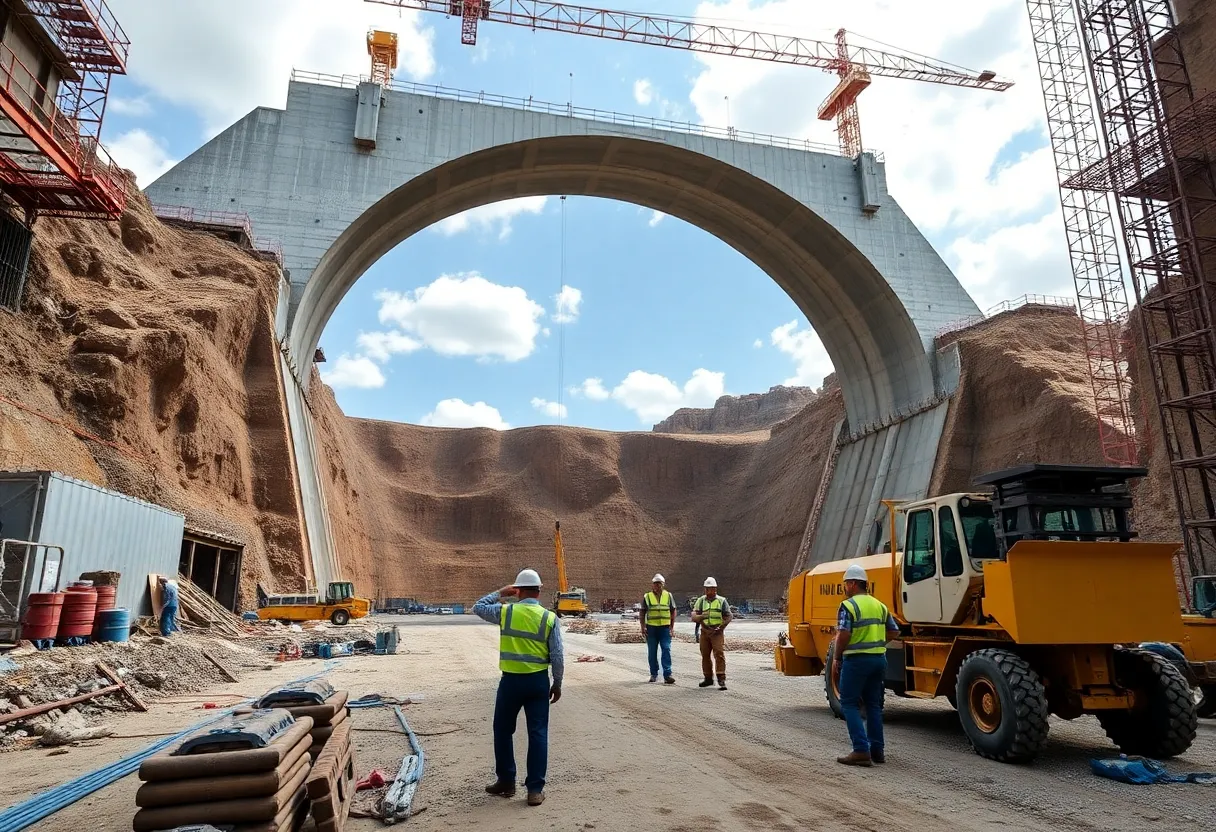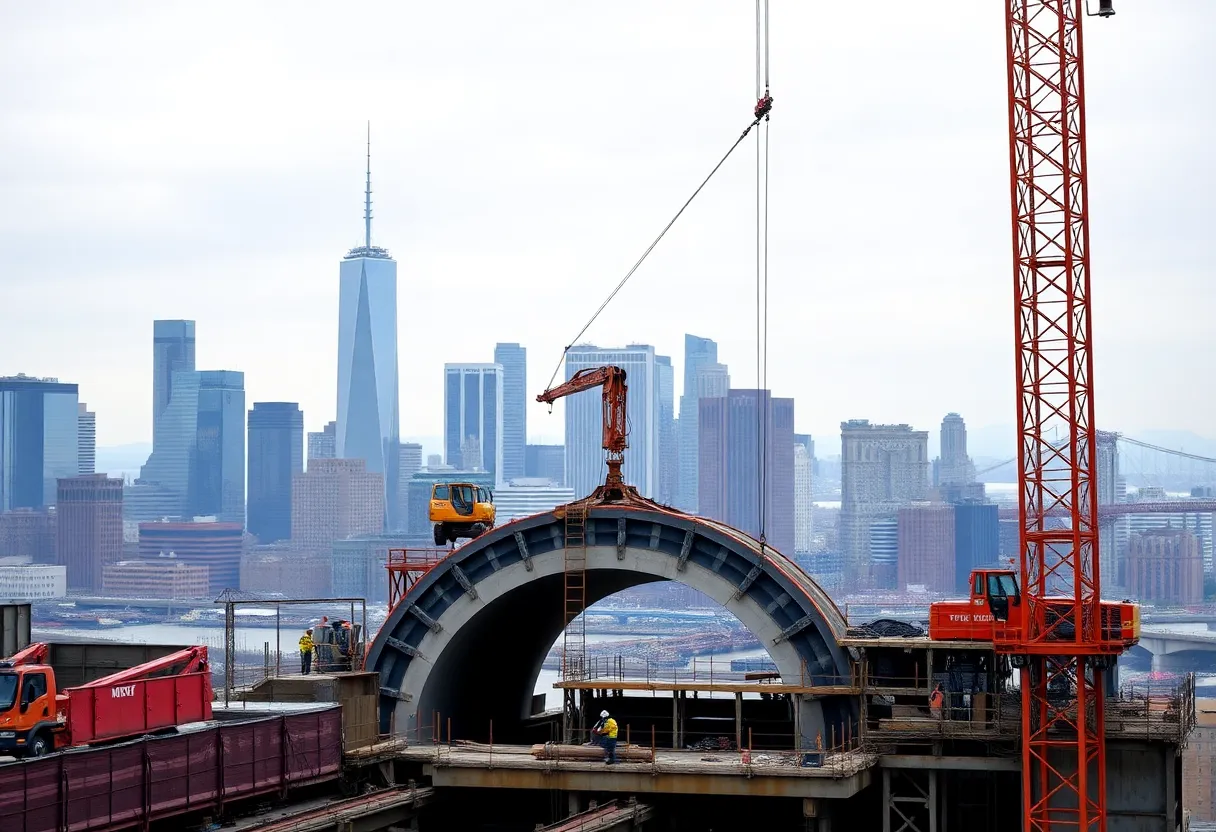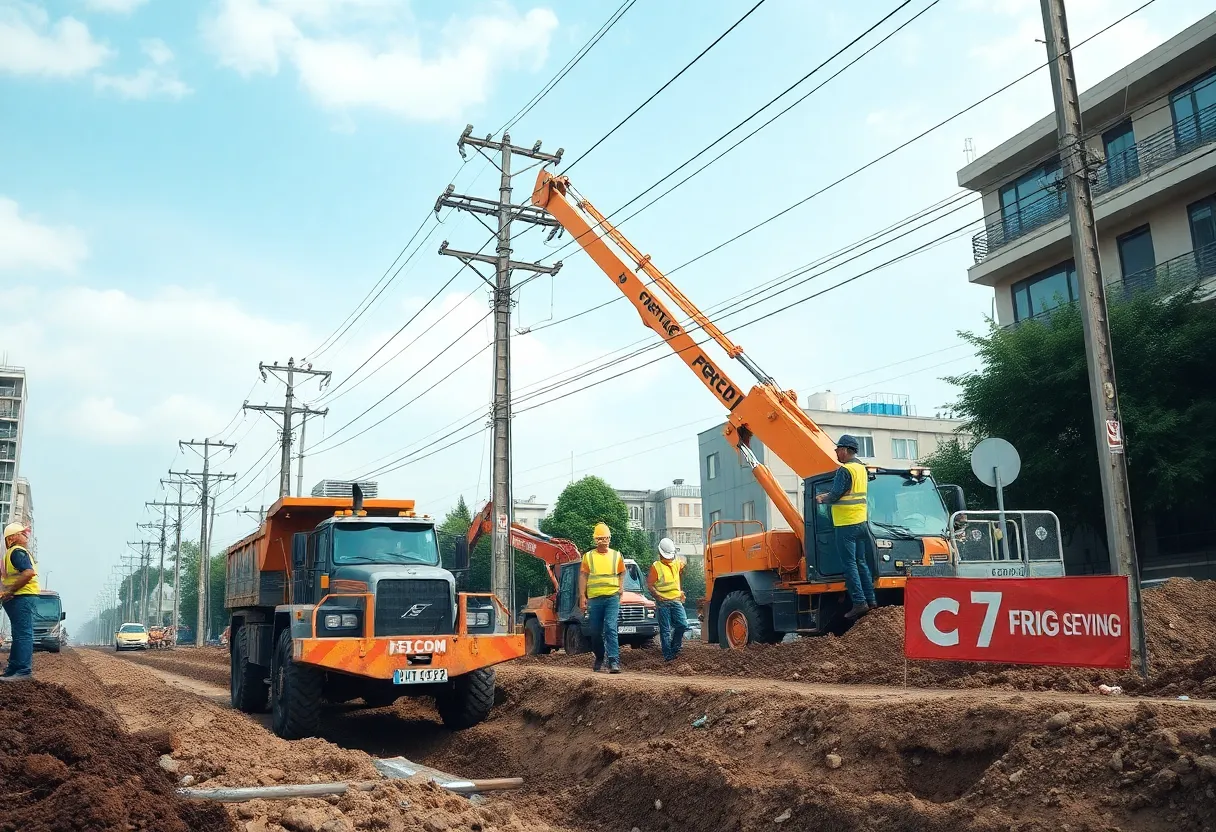News Summary
The construction of arch dams is seeing a significant improvement in efficiency and safety through a groundbreaking simulation model. Addressing mechanical spatial-temporal conflicts, this model optimizes management processes during pouring operations, particularly in complex projects like the Baihetan arch dam. By analyzing conflict risks and proposing quantification algorithms, it aims to ensure safer and more efficient construction practices that could transform the industry.
Innovative Simulation Model Enhances Construction Efficiency and Safety in Arch Dam Projects
The construction industry continues to evolve, and recent advancements in simulation models are paving the way for improved efficiency and safety, particularly in arch dam projects. A pressing concern during such construction efforts is the outbreak of mechanical spatial–temporal conflict, a challenge that can compromise project quality, worker safety, and adherence to schedules. The newly developed simulation models offer solutions to these issues by analyzing how labor crews engage in concurrent activities within shared workspaces.
Understanding the essence of spatial-temporal conflict is crucial; it refers to situations where multiple labor crews must navigate the same physical space at the same time, resulting in potential collisions and inefficiencies. The construction process simulation provides essential insights by analyzing these conflicts, enabling optimized management and organization.
Focus of the Study
A recent study centered on the pouring construction process of the Baihetan arch dam revealed significant levels of spatial-temporal conflicts and their impact on construction efficiency. The research introduces a quantification algorithm to categorize conflicts based on criteria such as safety, potential efficiency loss, and collision risks. By bringing quantitative analysis into the picture, this approach allows construction managers to make data-driven decisions.
The simulation framework designed for this study includes key objectives, operation cycles, and resource allocation mechanisms, along with essential modeling assumptions concerning construction machinery. This comprehensive system lays the groundwork for visual simulation tools that effectively integrate and analyze conflict information.
Simulation Results Reveal Critical Insights
Results from the simulation indicated that spatial-temporal conflicts frequently arise during the pouring process of arch dams, presenting substantial safety risks and causing efficiency declines. By implementing effective unloading point planning and carefully setting construction machinery trajectories, the risks associated with these conflicts can be significantly minimized.
Construction processes for arch dams typically adopt a layered-block method, which involves numerous independent units formed by countless pouring blocks. The safety and efficiency of the entire project are directly tied to the conditions surrounding each pouring block, making it imperative to maintain a high standard throughout the process.
Quantifying Risks and Enhancing Management
The study successfully quantifies the physical collision accident rate, security risk rate, and efficiency loss rate at specific points during construction. This level of quantification presents invaluable data for ongoing project management and risk assessment during the pouring process. Key influencing factors for spatial-temporal conflicts were identified as machinery size, construction methodology, operational speed, and running trajectory.
By meticulously analyzing these dynamics, researchers have developed a simulation model that effectively illustrates the complexities and often random nature of construction procedures, particularly within the pouring process. The Baihetan Hydropower Station serves as a case study, emphasizing the critical need for refined management strategies in construction operations.
Implications for Future Arch Dam Projects
With the findings of this study showcasing significant insights, their applications can extend beyond the Baihetan arch dam. Construction efficiency and safety improvements derived from these simulation models can benefit similar projects worldwide. By prioritizing spatial-temporal conflict management, construction teams can significantly enhance performance while ensuring the well-being of all workers engaged in these challenging endeavors.
In conclusion, the innovative simulation model stands out as a transformative tool in the construction landscape, particularly for arch dam projects. Through its systematic examination of spatial-temporal conflicts, it lays a robust foundation for better risk management, thereby promising to shape a safe and efficient future in construction.
Deeper Dive: News & Info About This Topic
Additional Resources
- Water Power Magazine: Spotlight on Large Dams
- South China Morning Post: How China Built the World’s Largest Arch Dam
- NS Energy: Baihetan Hydropower Project
- Power Magazine: China Starts Up Turbines at 16 GW Hydro Project
- Global Construction Review: China Completes World’s Second Largest Hydropower Project
- Wikipedia: Hydropower
- Google Search: Arch Dam Construction
- Google Scholar: Arch Dam Construction Efficiency
- Encyclopedia Britannica: Dam
- Google News: Hydropower Projects
Author: Construction NY News
The NEW YORK STAFF WRITER represents the experienced team at constructionnynews.com, your go-to source for actionable local news and information in New York and beyond. Specializing in "news you can use," we cover essential topics like product reviews for personal and business needs, local business directories, politics, real estate trends, neighborhood insights, and state news affecting the area—with deep expertise drawn from years of dedicated reporting and strong community input, including local press releases and business updates. We deliver top reporting on high-value events such as the New York Build Expo, infrastructure breakthroughs, and cutting-edge construction technology showcases. Our coverage extends to key organizations like the Associated General Contractors of New York State and the Building Trades Employers' Association, plus leading businesses in construction and real estate that power the local economy such as Turner Construction Company and CMiC Global. As part of the broader network, including constructioncanews.com, constructiontxnews.com, and constructionflnews.com, we provide comprehensive, credible insights into the dynamic construction landscape across multiple states.





